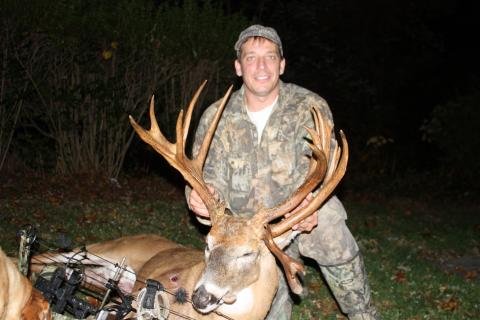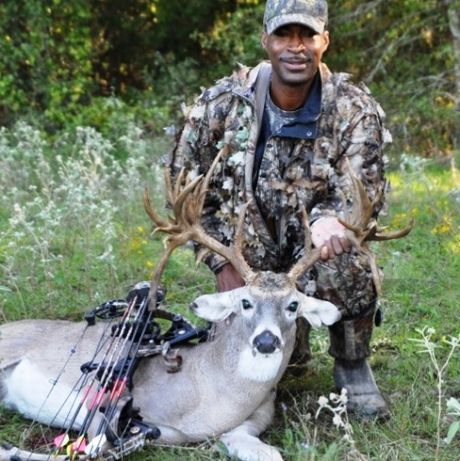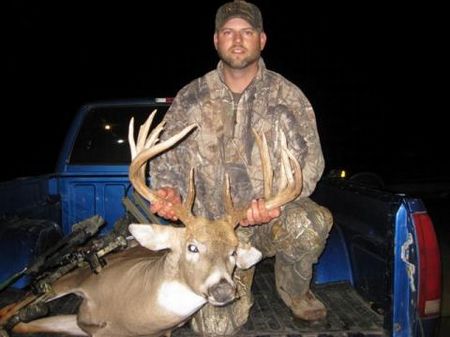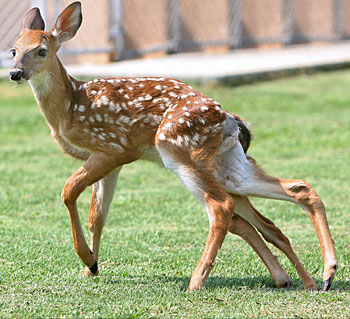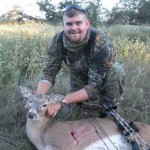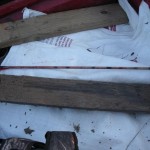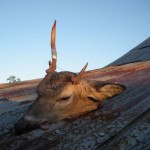Reader Submitted on October 19, 2009
I’ve been bow hunting white-tailed deer ever since I started shooting archery in 4-H Shooting Sports (almost 12 years ago now). However I’ve never taken a deer, buck or doe, with a bow. Now that I’ve been out of college for a while, I have had more time to dedicate to deer hunting. The property I hunt is located in Colorado County, not far from Speaks, Texas. I’ve been trying to make it out all all month, but with the bad weather and college football games my time has been limited.
So, I finally make it out this middle of October Saturday morning. I’m sitting in my tree enjoying the cool air and watching the geese fly over. My deer stand backs up to a rice field. From out on the prairie field comes 2 does on a dead run and they stop about 40 yards from the tree I’m set up in. Then seconds later, a whitetail buck comes trotting up behind, nose to ground, neck swollen, and on their trail. I grab my bow and nock an arrow. Unfortunately, he never stops despite my yelling at him.
That evening, I return to my tree to wait. After being on stand for an hour and a half, the same buck comes walking up from behind me and proceeds to start munching on some fallen oak leaves. I manage to twist my body and nock an arrow without being detected. As he stands broadside, I pull back and my arrow falls to the ground! The young buck turns, but does not know what’s going on. In what seem like seconds, I nock a second arrow, pull back, and release. The next thing I see is the orange fletching on my arrow sticking out his side.
Nervous and shaking, I call my dad off his stand where he was hog hunting an open field. He arrives about 15 minutes later and I crawl out of the tree. We go search for my buck. Following what seemed to be a text book blood trail, there he lay only 50 steps from where I shot him. My first buck with a bow was not a big one, but one I will never forget.
The experience has taken me to a whole new level of whitetail hunting enthusiasm. The white-tailed buck, taken in an one of Texas’ antler restriction counties, is a spike with a 12 inch beam one side and a 3.5 inch antler on the other.
